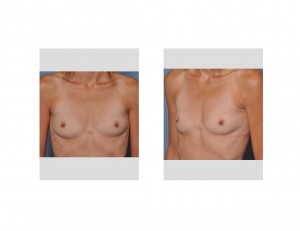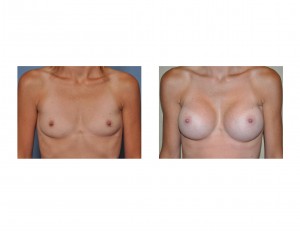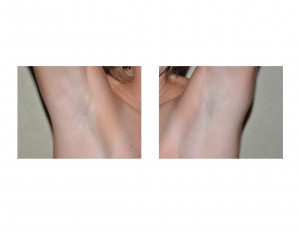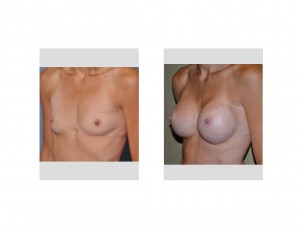Background: Breast augmentation continues to be one of, if not the most, reliable body contouring procedure. At the least, its popularity by number of breast implants placed annually has remained stable if not gradually increased. Having only two types of implants to choose from, saline vs. silicone gel, the options for breast enhancement seem fairly simple. Yet women have a plethora of pertinent questions besides implant type including implant size, projection, position, breast shape, and long-term effects. The answers to these questions are influenced significantly by the anatomy of one’s chest wall and breasts.
Many women ask…what is the best way to do breast augmentation…or what is the best breast implant? As the following case will illustrate, those answers must be individualized for each patient.

When one is very thin, the choice between saline and silicone gel implants is an important consideration. With little breast tissue between the skin and the implant on the bottom and sides of the breast (even in a submuscular position), the potential for palpable rippling with saline implants is almost assured. With silicone implants, rippling is far less likely and is usually very minor even if it occurs.
Is there a difference between how saline or silicone implants feel? In thin patients, the answer is yes. Silicone will feel more natural due to lack of any significant breast tissue. When more breast tissue exists, that difference in feel becomes more indistinguishable.
In younger patients (< 40 years of age), patients should realize that it is not a question if their implants will need to be replaced…but when. Failure of a breast implant is most dramatic with saline as the breast loses volume which is very obvious. (deflation) Failure of a silicone breast implants is much more subtle and often unknown since the gel is not absorbable. (silent rupture)
With these advantages for silicone in a young thin female with no breast tissue, she opted for saline implants. Why in the face of the superiority for silicone over saline in her case? The one advantage that saline has over silicone, all other issues aside, is economic. Saline breast augmentation is less expensive and is the right implant choice when it fits one’s budget.


Case Highlights:
1) Breast augmentation poses multiple implant choices. Which implant is best for any patient may be different based on their breast anatomy and economics.
2) The risk of rippling and spontaneous deflation are a normal part of saline breast implants. Rippling is expected in thin patients and will be better camouflaged for those women with some pre-existing breast tissue.
3) No breast implant should be expected to last a lifetime. This point is of particular emphasis in younger patients.
Dr. Barry Eppley
Indianapolis



